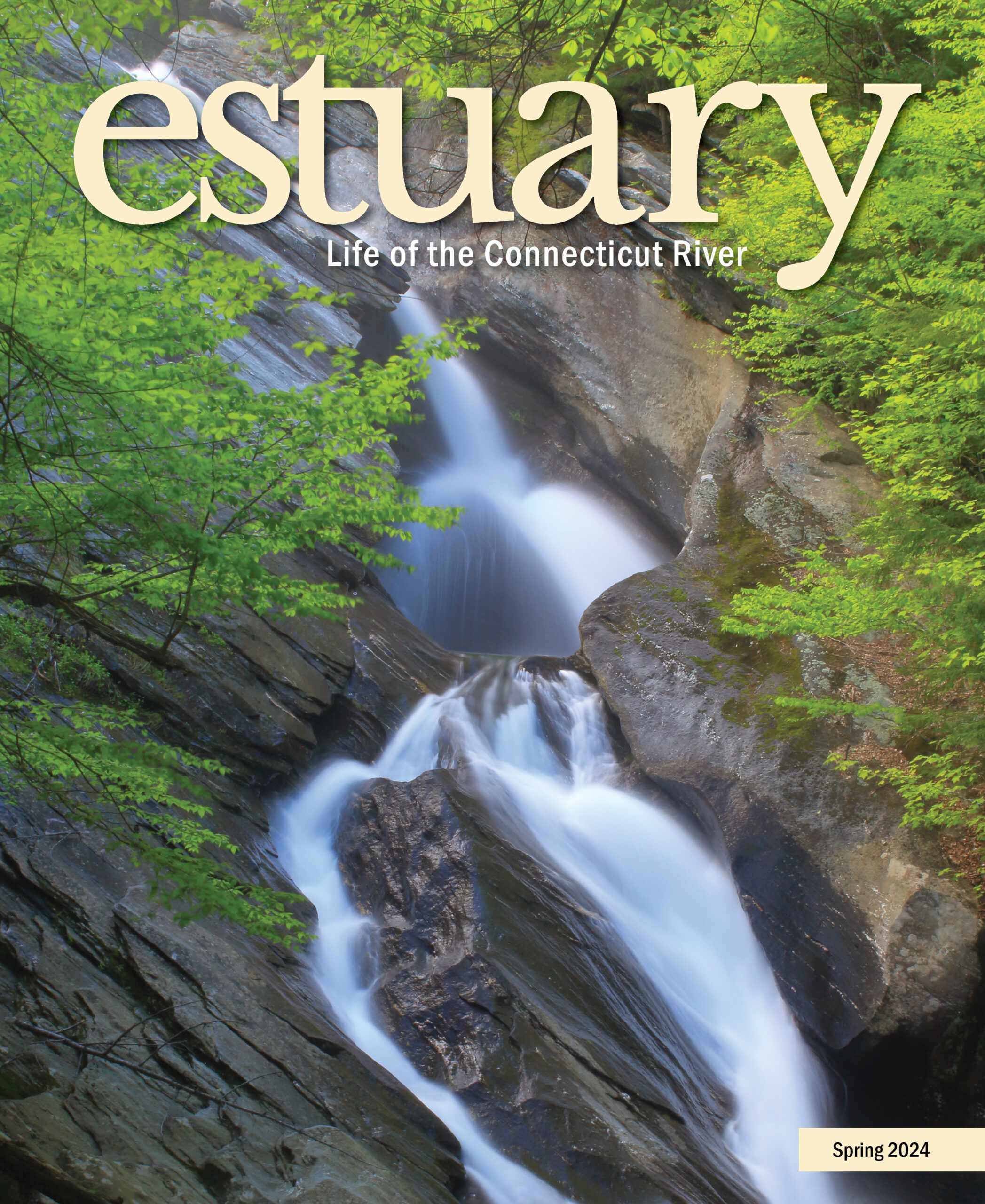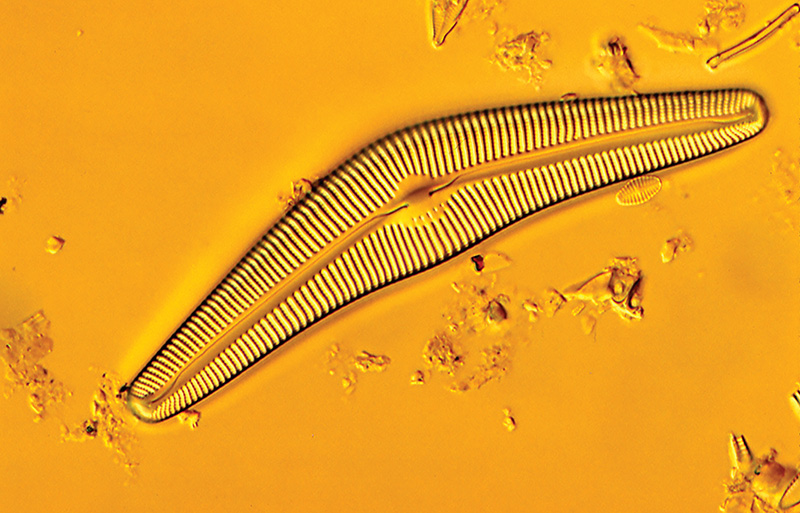 This article appears in the Spring 2024 issue
This article appears in the Spring 2024 issue
 Cymbella Cistula
Cymbella Cistula
A Beacon of Healthy Water
By Andrew Fisk
While many are familiar with the fish and wildlife that define our landscapes, there are other lesser-known critters that play a role in creating and maintaining a healthy ecosystem. This column’s featured organism isn’t flashy with brilliant plumage, a thrilling call, or a remarkable migration story. It is very difficult to see by the naked eye and isn’t tasty to eat. But you can always know where to find it: in clean, clear, healthy waters throughout the watershed.
So what is this new river friend of ours?
Cymbella cistula, shown here, is one of the many members of the genera and among the many thousands of varieties of diatoms or what are commonly called algae. Diatoms are microscopic cells with an outer body shaped in a dramatic and diverse array of wondrous forms. These individual diatoms can exist as individuals, or they can group together in visible colonies. Such colonies can be mistaken for a vascular plant—a plant that has circuitry-like blood vessels for transporting water and nutrients through its stem. Diatoms, though, as a simpler form of life, have none of this circuitry.

Cymbella cistula. Image Credit: Mark B. Edlund, PhD & National Science Foundation.
Diatoms generate oxygen through photosynthesis—the process where sunlight and carbon dioxide are converted to oxygen, energy, and water. They are often referred to as planktonic (from the Greek for “wandering”) because, despite some having the ability to swim about, they spend their time moving with the currents. The companion group of critters to the plant-like diatoms—or phytoplankton—is the zooplankton, the first consumer in the ocean that eats phytoplankton, also small or early life-stage animals that swim or float about. These two types of planktonic organisms are critical to freshwater and marine food webs and make up a tremendous amount of the living biomass, or organic matter, in our rivers and streams.
Long-time readers of the magazine may recall the stunning photos and description of the many different species of diatoms living in the Connecticut River estuary from the inaugural issue. Algae? Phytoplankton? You may be envisioning a lake or stream covered in green, making recreation discouraging or even hazardous when certain types of algae bloom in the heat of summer. Too many nutrients from treated wastewater and lawn or farm chemicals allow many species of diatoms to excessively thrive. And while abundant amounts of algae generate oxygen from their photosynthesis, inevitably an excessive amount of algae biomass will crash and decay. The decay then consumes all that oxygen. What was a naturally clear and clean waterbody turns a murky green with little oxygen.
But what about our new friend Cymbella cistula? Not all diatoms are alike! While many species are quite sensitive to an abundance of nutrients, Cymbella are one of the diatoms that can only flourish in low nutrient (“oligotropic”) conditions, i.e., waterbodies that run clear and clean. Here is where this tiny organism has an out-sized role in our work to protect and restore our waters.
To chart a course away from polluted and degraded rivers, streams, lakes, and wetlands we need to set a destination. One destination is a waterbody that has little or no impact from humans, or what scientists and regulators call a baseline condition. Because different types of waterbodies—wetlands, estuaries, lakes, streams, and rivers—all have different chemical, biological, and physical characteristics, no two types of baseline conditions are exactly the same.
Pristine rivers and streams in our region are generally those that run clear and cold and flow through forests and areas of little human disturbance. While you may know a pristine stream when you see it, in order to make decisions about how to restore an unloved reach of river, scientists and regulators need precise and measurable indicators of what pristine means.
For many years those indicators were chemical measures of water cleanliness—dissolved oxygen, suspended solids, or temperature. But these indicators only describe a condition at a point in time when the measurement was taken and don’t integrate conditions over longer periods. And they can miss other problems that may be present. So these chemical measures alone are not the best for ensuring we make it to our destination of healthy water. To get the fullest and most robust picture of the health of a river or stream we need to listen to the critters!
To make a better roadmap (rivermap?) to our destination, scientists have for years been exploring what types of fish, insects, and diatoms live in different types of waterbodies. This work over the last thirty years has created biological definitions of a waterbody’s health to complement the more simplistic chemical measures.
One of those biological definitions is based on the description of the types and amounts of diatoms present in different environmental conditions. In many parts of the country, including here in New England, scientists have now collected enough diatom data across enough waterbody types and conditions to create statistical models that show us which diatoms should be living in which types of water conditions. These data and models allow environmental professionals to design clean-up plans or demonstrate how a high-quality water body can remain in good health.
And one of those important critters is the Cymbella diatoms whose presence in these models provides a scientifically robust measure of what constitutes high-quality water. The next time you are paddling down or wandering along that clear and cold stream give a nod to that other “wanderer” helping guide us on our journey to clean and healthy water for all!
Andrew Fisk, PhD, is the Northeast Regional Director for American Rivers. American Rivers is championing a national effort to protect and restore all rivers, from remote mountain streams to urban waterways. Healthy rivers provide people and nature with clean, abundant water and natural habitat. For fifty years, American Rivers’ staff, supporters, and partners have shared a common belief: Life Depends on Rivers.
